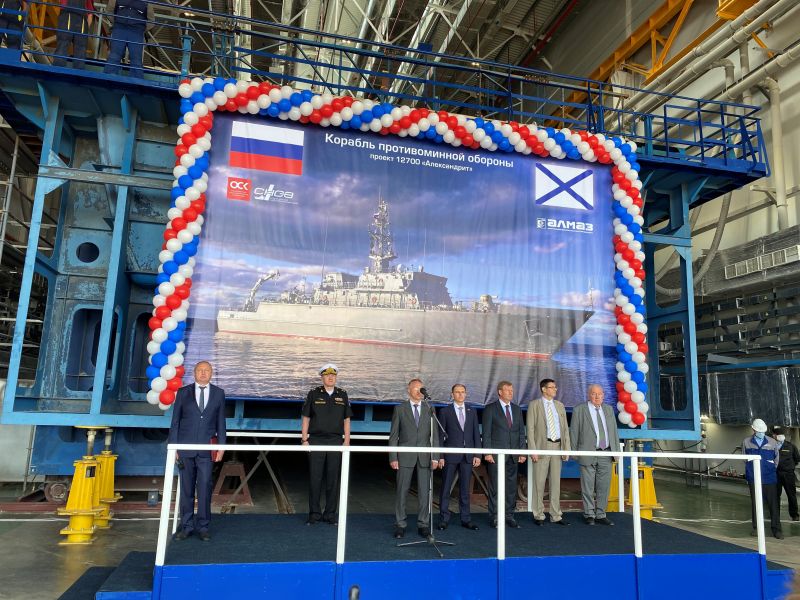Russia starts work on 8th Alexandrite-E class anti mine vessel
By IDI

Russia, on July 24, in a solemn ceremony at the Sredne-Nevsky Shipyard laid the keel of the eighth ship of the Project 12700 ‘Lev Chernavin’ mine counter measures ships.
“The ceremony was attended by the management of JSC SNSZ, Deputy Commander-in-Chief of the Navy for Armaments Igor Mukhametshin, Chief Adviser to General Director of JSC USC Viktor Chirkov and representatives of the Central Marine Design Bureau Almaz represented by the Chief Designer of Project 12700 mine defense ships Alexander Kalinin,” ship yard said in a statement.
It is named “in honor of the Soviet submarine officer, Rear Admiral Lev Davydovich Chernavin, who commanded submarine formations of the Northern Fleet.”
According to Russian Ministry of Defence, these ships are designed to struggle against sea mines, including new so-called "smart" mines, which can be detected by ships of the Ivan Antonov class both in water and in the seabed.
According to the Russian Navy High Command, the new generation mine counter measures ships of this project will significantly enhance the potential and effectiveness of the Russian Navy Minesweeping Forces.
These ships are capable to form an anti-mine contour using the newest, highly effective hydroacoustic stations located both on the ship herself and on her remote-controlled and autonomous underwater vehicles, as well as an integrated bridge-type system, the main command post as an automated mine action control system. At the same time, the ship is also able to use the traditional sweep armament.
The ship's displacement is 890 tons, length is 61 metres, width is 10 metres, speed at full displacement is 16.5 knots, crew is over 40 people. The ship has a high manoeuvrability due to the use of various thrusters. The ship has comfortable service conditions for her crew.
This ship has a unique, the world's largest hull of monolithic fibreglass, formed by the method of vacuum infusion.
The advantage of the ship's hull is its higher strength in comparison with steel hulls, which provides greater survivability of the ship when searching for mines. The service life of such a hull is greater than that of a hull made of low-magnetic steel, and the hull weight is much smaller.




